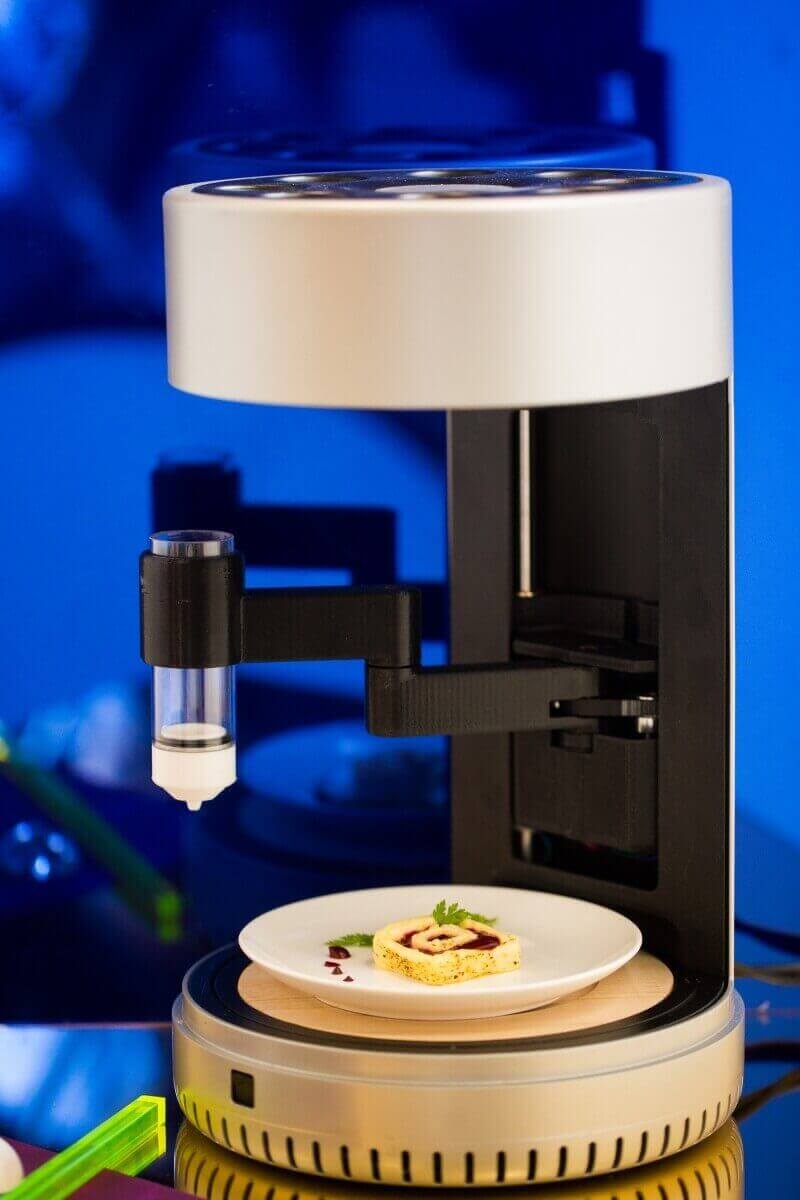Columbia University engineers are working on a 3D food printer for your home. They want to completely change the way we eat – by already cooking the food in the printer.
Yes, there are several food 3D printers around, but let‘s be brutally honest: Although they are technically advanced and even in use, most of them don’t stand a chance on the market. The reason: Most of them can’t prepare a nice, hot meal for several hungry people in time.
This might be subject to chance.
Lipson said:
“Food printers are not meant to replace conventional cooking ― they won’t solve all of our nutritional needs, nor cook everything we should eat. But they will produce an infinite variety of customized fresh, nutritional foods on demand, transforming digital recipes and basic ingredients supplied in frozen cartridges into healthy dishes that can supplement our daily intake. I think this is the missing link that will bring the benefits of personalized data-driven health to our kitchen tables ― it’s the ‘killer app’ of 3D printing.”
Their aim is to help users to manage their own nutrition, devise new foods, and also save on energy costs. So far the team has managed to prove that food can be made from their device. Now they are working on ensuring the size is small enough to fit right into a 21st-century kitchen.
How Does it Work?
So, what’s new with this 3D printer? The major news that the – yet nameless – food 3D printer is able to heat and “cook” the food. It is fitted out with a robotic arm that holds eight slots for frozen food cartridges. The next big challenge for the team is finding a way to incorporate an infrared heating element into the arm.
This component will be controlled by a unique software program that is currently being developed. Lipson’s aim is to have this completed by the end of the summer.
Lipson and his team are collaborating with New York City-based International Culinary Center (ICC) and working closely with Chef Hervé Malivert, ICC’s director of food technology and culinary coordinator.
Malivert said: “As these printers improve, it will be exciting to see where we can go with these machines. For instance, I think they will be very useful in the area of health and nutrition, especially in nursing homes and hospitals.”
Would you cook all of your food using a 3D printer? Let us know in the comments.
(Source: Columbia Engineering)
License: The text of "Columbia Scientists use a 3D Printer to Cook your Food" by All3DP is licensed under a Creative Commons Attribution 4.0 International License.

